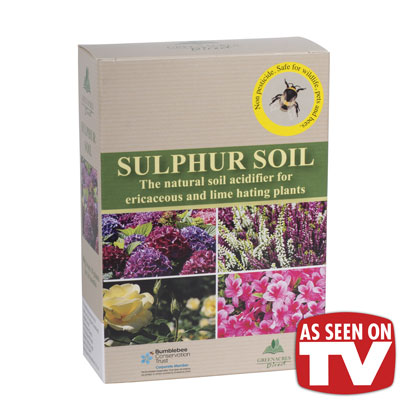Understanding the science behind soil composition is paramount for anyone interested in achieving optimal plant health. Sulphur, an essential element, plays a crucial role in enhancing the fertility of various soil types, especially for plants that thrive in acidic environments. Unraveling the mysteries of sulphur incorporation could unlock new potential for your garden or landscape.
In this exploration, we will delve into the intricacies of adding sulphur to your soil and the myriad benefits it bestows upon your flora, paving the way for a flourishing ecosystem.
The Importance of Sulphur in Agriculture
Sulphur is often overshadowed by macronutrients like nitrogen, phosphorous, and potassium, yet it remains indispensable for plant vitality. Engaging in the biology of plants reveals that sulphur is a crucial component of amino acids, the building blocks of proteins. Furthermore, it is instrumental in synthesizing chlorophyll, thereby contributing to photosynthesis efficiency. Plants deficient in sulphur exhibit stunted growth, yellowing leaves, and poor fruit development. Thus, understanding its role is critical for cultivating a vibrant garden.
In addition to enhancing plant growth, sulphur contributes to soil health. It assists in microbial activity, which in turn supports nutrient cycling. An increase in soil microbial populations can foster better water retention and nutrient availability, promoting overall soil structure—and who wouldn’t want that in their garden?
Identifying the Need for Sulphur
Before introducing sulphur into your soil, it is imperative to ascertain whether your current soil composition warrants its addition. The simplest way to do this is through soil testing, which will give you a comprehensive overview of pH levels, nutrient deficiencies, and the overall health of your soil.
Typically, sulphur is most beneficial in alkaline soils where the pH exceeds 7.0. This is often problematic for acid-loving plants such as azaleas, blueberries, and various types of ferns. If the soil test reveals a need for increased acidity or if your plants exhibit signs of sulphur deficiency, then you are ready to explore sulphur amendments.
Methods of Application: How to Add Sulphur to Soil
Once you have confirmed the necessity for sulphur, the next step is to incorporate this element into your soil effectively. Several methods exist, each with its merits and drawbacks. Understanding these options will empower you to make an informed decision.
Granulated Sulphur: A Precise Solution
Granulated sulphur is one of the most common forms of sulphur amendments. Its slow-release nature allows for gradual acidity adjustment, making it a gentle choice for long-term soil management. To apply, simply distribute the granules evenly over the soil surface and gently work them into the top few inches of soil. A general guideline suggests using 1 to 2 pounds per 100 square feet, but always refer to specific package instructions for optimal results.
Liquid Sulphur Products: Quick and Effective
For those seeking immediate results, liquid sulphur products deliver a quick fix. These materials can swiftly alter pH levels and are particularly effective for plants in containers or raised beds. However, caution is essential: due to the rapid nature of its application, overdosing may harm plant roots if not done carefully. Dilute the liquid according to manufacturer guidelines to achieve the desired effect without jeopardizing your plants’ health.
Compost Enriched with Sulphur: A Dual Approach
Another innovative method incorporates sulphur into your compost. By adding sulphur-rich amendments such as gypsum or elemental sulphur to your compost pile, you not only enhance the compost’s nutrient profile but also ensure that when it’s used, your plants receive a balanced array of essential nutrients during their growth cycle. This organic approach has a dual benefit, enriching the soil while boosting microbial activity.
The Aftermath: Monitoring Soil pH and Plant Health
After incorporating sulphur, patience is a virtue. Soil chemistry shifts don’t happen overnight. It often takes several weeks to months for the effects of added sulphur to reflect in soil pH and overall plant health. Regular testing and observation are essential in monitoring changes. Look for signs of improved growth, deep rich colors in foliage, and increased flowering or fruiting.
It’s crucial to remember that while sulphur benefits many plants, it may not suit all flora. Wise garden planning involves understanding the specific needs of your plants and tailoring your soil amendments accordingly.
Conclusion: A New Horizon for Gardening Enthusiasts
The enthusiasts and caretakers of gardens striving for peak plant potential now have the means to elevate their practices through the beneficial incorporation of sulphur. Not only does this incorporation solve specific deficiencies, but it opens up avenues for sustainable practices that honor the delicate ecosystem of soil health.
In this era of informed gardening, embracing sulphur can transform how gardeners perceive and manage plant health. By applying the knowledge of sulphur’s significance and methods of application, you have in your hands the tools to create not just thriving plants but a vibrant, balanced ecosystem.





Leave a Comment